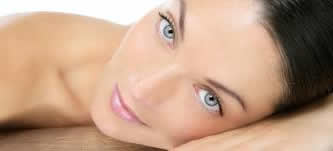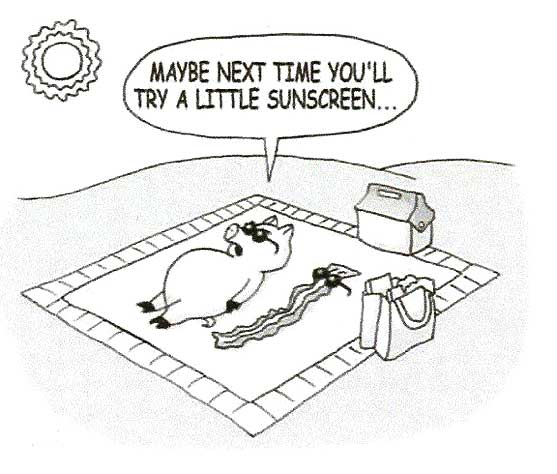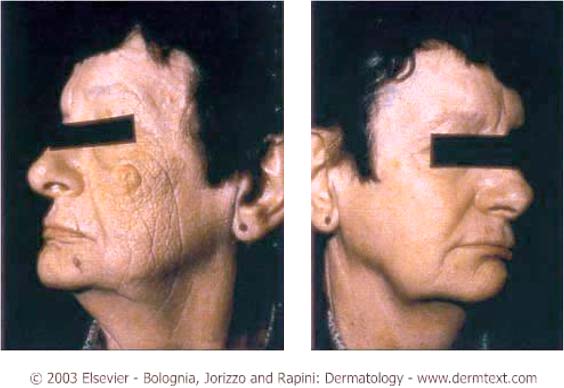Safe Sun
Protection from over exposure to UVA/UVB is imperative to guard against wrinkles, spider veins, dark spots, rough leathery skin, and especially skin cancer.
Everyone knows the use of a sunscreen is one way to protect the skin. However, most people are not aware of what, when, where or how to apply it. As a result, many end up with the aforementioned skin conditions and wonder what they did wrong. After all, they were wearing an SPF 70!
Contrary to popular belief, did you know that an SPF above 30 does not provide significantly greater protection? SPF 15 will guard against 94.4% of the suns rays, and SPF 30, 97.4%. Also, SPF is a measurement of UVB only. There is no agreed upon measurement of UVA at this time. UVB are shorter rays and are responsible for the burn that accompanies overexposure. UVA are longer rays and penetrate deeper, which causes destruction at the cellular level. UVA breaks down collagen and elastin resulting in laxity of the skin and wrinkles. Seek an SPF of at least 15 to 30, but remember for broad spectrum protection the proper ingredients and application are just as crucial.
The following tips and information may help shed some light on how to protect yourself and your loved ones from sun damage;
The first step is to look for one or more of the following ingredients on the label and choose a sunscreen that contains titanium dioxide, zinc oxide or Parsol (aka, avobenzone).
- Apply one half hour before activity for adequate absorption.
- Apply liberally. One ounce is needed for the average body.
- Rub into all exposed areas. Dont forget the back of the neck, ears, and lips and scalp, if hair is thinning.
- Reapply every two hours during activities. In a recent study, reapplication was the key to preventing a sunburn.
- There is no sunscreen lotion that is truly waterproof, rub proof or sweat proof. However, water resistant is better in that it will provide longer lasting protection. But, reapplication is still necessary.
- Do not be fooled by cold, cloudy, or wintry days. Eighty percent of UV rays penetrate through the clouds.
- Protective clothing is advisable. This includes hats, long sleeves and long pantsparticularly during activities in which you are outside for extended periods of time such as sporting events. The web site www.solumbra.com has protective and stylish clothing for children and adults.
- Sunglasses not only look great, but also provide protection for the eyes. Studies indicate protecting your eyes from the sun may also prevent cataracts. This also minimizes squinting, which exacerbates crow's feet and wrinkles around the eyes.
- Be aware of medications that cause photosensitivity (increased sensitivity to the sun). Many medications from antibiotics to antidepressants can cause severe sun damage after a relatively short period in the sun. For information about the medications you are taking, consult with your doctor or pharmacist. See my web site article titled "Photosensitivity."
- Some of you may have concerns as to whether too much protection from the sun will interfere with vitamin D absorption. According to the Berkeley Wellness Newsletter, ten minutes of exposure three times per week will provide adequate vitamin D year round.
- I have noticed sunscreens, especially those targeted for children, do not have adequate protection. Many labels state broad spectrum protection, yet do not contain the ingredients titanium dioxide, zinc oxide, Parsol (avobenzone), or the newly FDA-approved Mexoryl. This is why knowledge is important. Parents need to know how to protect their children from sun damage. Severe sunburn as a child may double the risk of skin cancer as an adult. Much of the damage I see in my forty-plus patients is a result from exposure before the age of eighteen.
- One last point You may rationalize that you dont need to wear daily sunscreen because you dont sunbathe. Most sun damage is due to the incidental exposure that accumulates every time we run a quick errand to the store or pick up the kids from school. In fact, the majority of brown spots and fine wrinkles I assess are noted on the left side of the face, which can be attributed to exposure while driving. The solution is simple. Since it is likely that you wear a daily moisturizer, just apply one that contains one of the ingredients listed above. For recommendations check out my newsletter article, Products for Under $30.00
|
This is an example of a woman who sat at a desk at work for 15
years with her left side exposed to the sun through a window.
Note the severe sun damage to her left cheek. |
|
|
|












